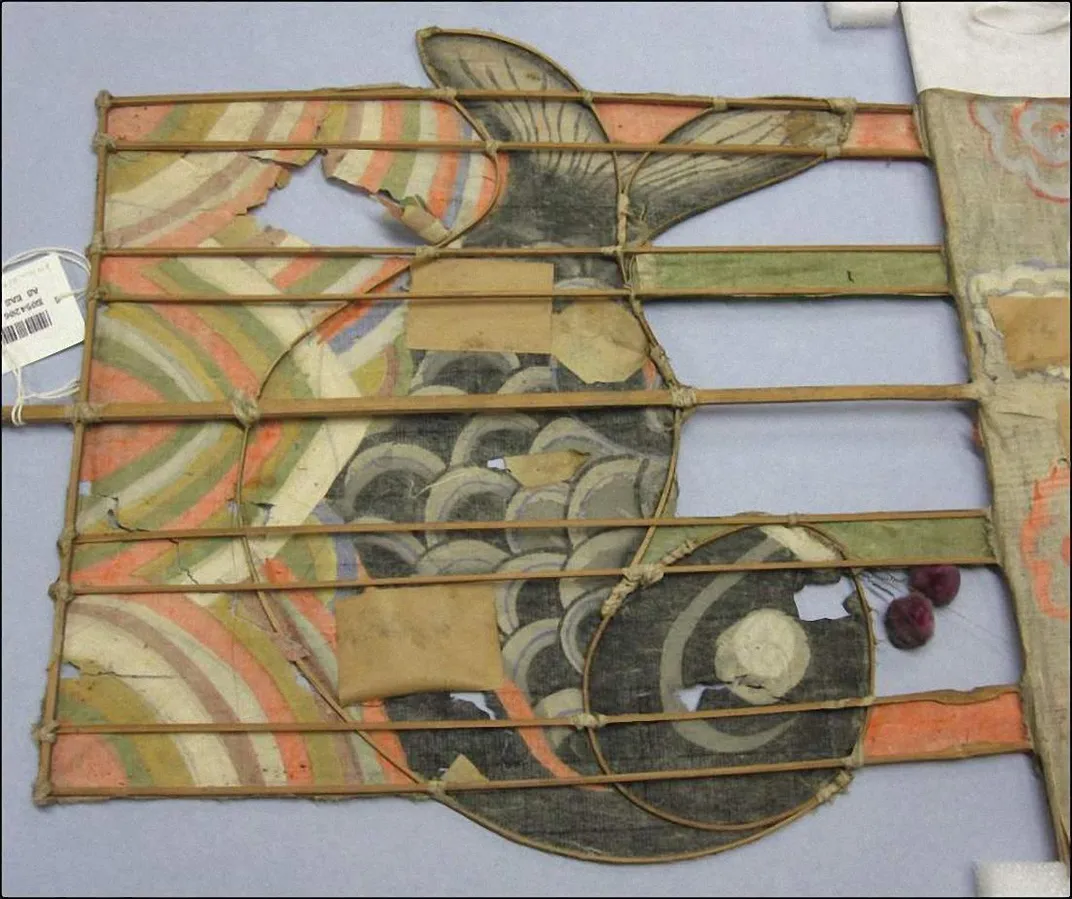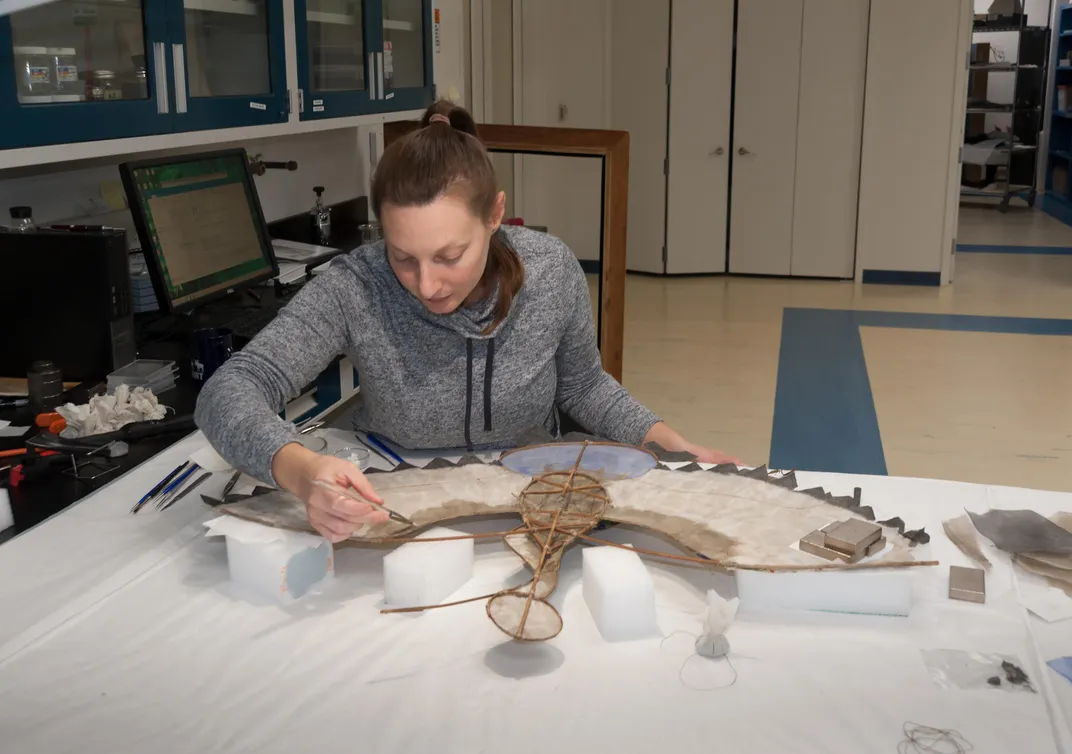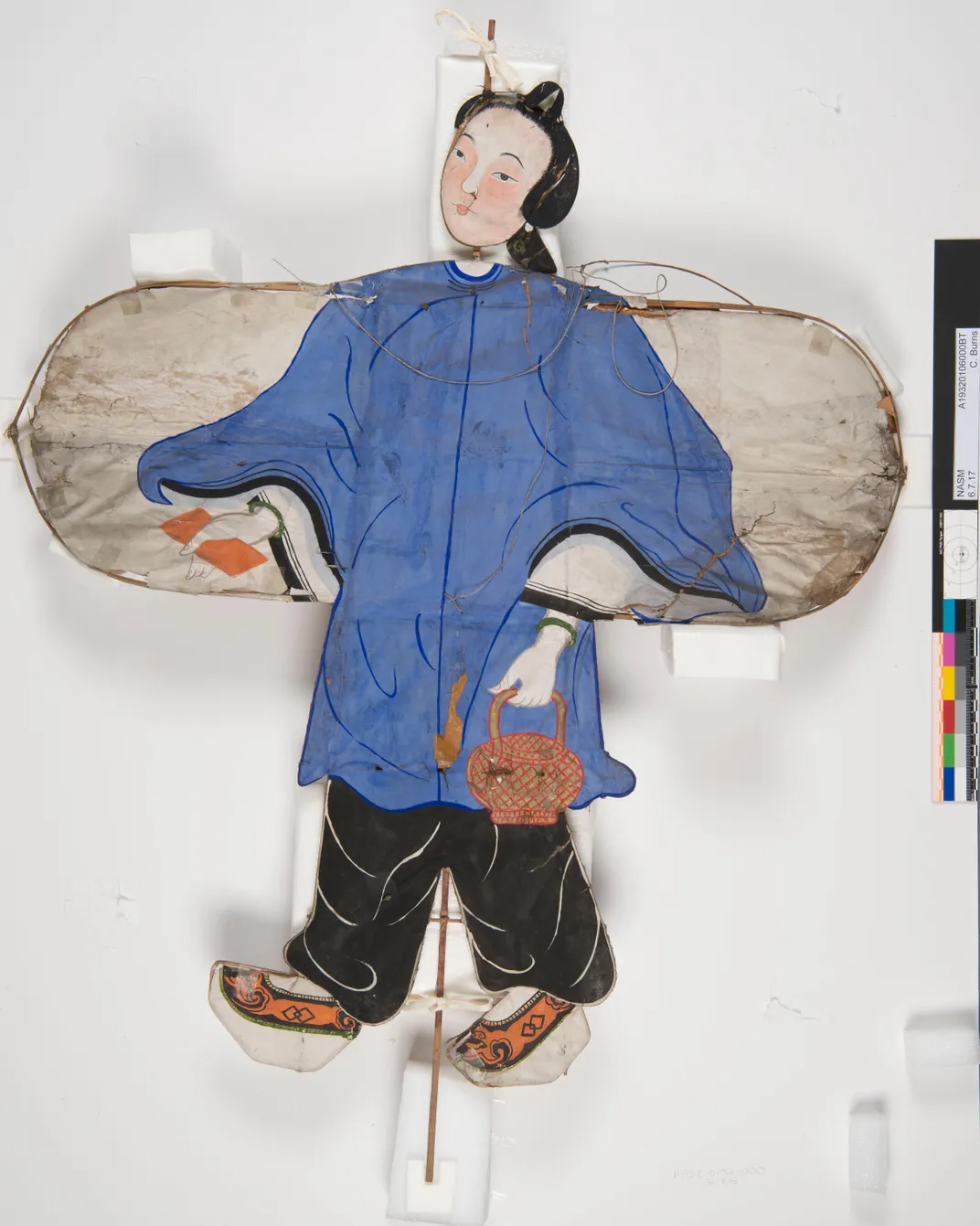The Splendor of Chinese Kites
The first flying objects crafted by human hands.
/https://tf-cmsv2-smithsonianmag-media.s3.amazonaws.com/filer/38/9c/389c581e-3a00-426f-9986-43212ce68dfd/16c_sep2018_nasm2013-00576cangetbetterifneeded_live.jpg)
There’s a gentle irony about some of the oldest human-made flying objects in the National Air and Space Museum’s collection—they probably never flew and certainly never will. They’re Chinese kites that were displayed at the great 1876 Philadelphia exposition, which celebrated the nation’s first 100 years. Thirty-seven countries participated. China sent a grand pavilion to show itself off, and the kites were one of the attractions. “The kites were created for the exhibition. China had a huge space and they were representing the entire country,” says paper conservator Amanda Malkin, to whom the kites owe their future. “They sent the best things they had.”
“Kites were the first flying objects crafted by human hands,” writes National Air and Space curator Tom Crouch in his 2004 book Wings: A History of Aviation from Kites to the Space Age. “Kites were used for everything from fishing to signaling. They carried lights, noise makers, and pyrotechnics aloft at night to frighten enemy troops, and there is every reason to accept the validity of Chinese and Japanese tales, and the testimony of Marco Polo, suggesting that the first humans to venture aloft did so aboard large kites.”
Following the 1876 exposition, several of the countries’ displays were simply packed up and shipped to Washington for donation to the Smithsonian Institution. Forty-three kites became part of the collection of the National Museum of Natural History. Twenty of them migrated to the National Air and Space Museum, then called the National Air Museum and housed in a structure behind the Smithsonian Castle known as the “Tin Shed.” In the 1930s, they were put on display.
But being on display also led to the kites’ near destruction. They were on view for about 30 years until the 1960s. The kites in the Museum’s collection were in terrible condition when Malkin came to work on them at the conservation lab at the Steven F. Udvar-Hazy Center in northern Virginia.
“Works on paper in particular are quite susceptible to light damage, humidity, temperature, insects—and especially back in the early 1900s, there were really no environmental controls,” says Malkin.
“The majority of them are still intact to some degree, but most of them exhibited flaking media—the pigment on the paper is flaking off,” she says. Also, the kites really weren’t built to last in the first place. “The Chinese paper itself is not a paper that lasts for a very long time,” she says. “It’s a very short-fibered paper, so more easily becomes embrittled than other papers.”
And it wasn’t just the inherent nature of the materials that caused deterioration. Someone’s best intentions took their toll as well. “On top of the severe degradation that was occurring within the materials, somebody at some point had gone in with modern materials—such as craft paper tape—to try to repair many of the tears,” says Malkin. “It caused even further degradation.” In the worst cases, there was little more left than the bamboo frame.
One more challenge—the kites are big and three-dimensional. “The majority of them are from two by two feet to six by six feet,” Malkin says. Taking the form of people and animals, the kites have intricate painted designs that had torn as the bamboo straightened over time. “I’m used to working on flat paper objects,” says Malkin. “It was very difficult to deal with brittle paper with painted designs and imagery that didn’t want to line up because the structure itself had started to change.”
Malkin spent three to four months on each kite. Her priority was to preserve what was there and prevent further deterioration.
Treatment began with gently cleaning the bamboo and paper and then stabilizing the flaking pigment with cellulose-based adhesive. The craft tape repairs were carefully moistened, which loosened the old glue, so the tape could be delicately removed with a tweezers and microspatula. Broken bamboo was repaired with a synthetic resin and wrapped in Japanese paper.
“A lot of them had losses to the paper, for many reasons,” Malkin recalls. “In order to reintegrate the design, so that the image was visually readable, and for structural purposes, the losses were filled. My main repair material was a lightweight Japanese paper, called Tengujo, that I toned with acrylic pigments, which were used to closely match the tone of the paper of the design.”
Ultimately, Malkin worked for two years and completed six kites before returning to her private practice in Alexandria. The kites she saved are back in storage. Although they’re repaired and stable now, it’s unknown if they will ever go back on display.
But there are still Chinese kites to collect. Crouch recalls a Chinese kite maker visiting family in Washington, D.C., who came to the Museum’s annual kite festival with a dragon kite. “It was just wonderful,” says Crouch. “Made up like the old Chinese kites—and he won that year. Hands down. I ran right up and collected that kite. It’s one of the most beautiful kites in the collection.”



